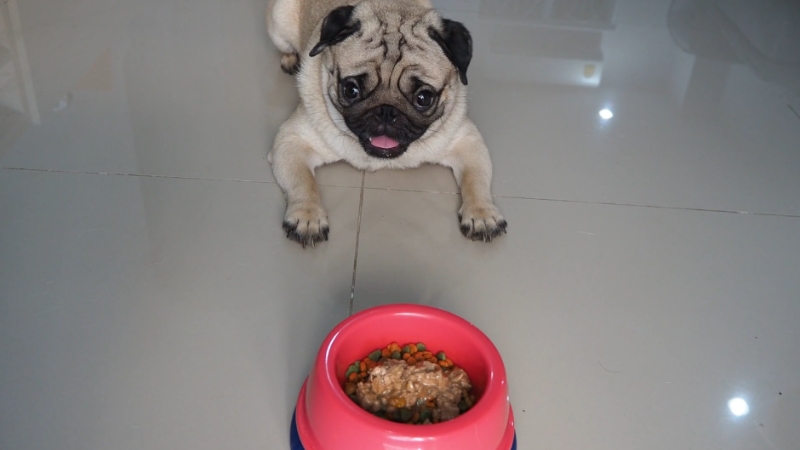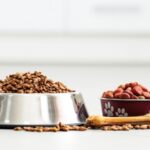Healthy kidneys filter out the stuff that doesn’t belong in the bloodstream. When they start to falter, they can’t kick out phosphorus like they used to. So it builds up.
That excess phosphorus? It puts strain on already tired kidneys, weakens bones, and can make dogs feel just… blah.
A low-phosphorus diet isn’t a magic cure, but it can slow the damage, ease symptoms, and help your dog feel a whole lot better.
A good target is under 0.6% phosphorus on a dry matter basis. Some prescription diets go even lower.
For homemade meals, aiming for roughly 15–60 mg of phosphorus per 100 kcal is often recommended. (Always check with your vet or a canine nutritionist to get specifics tailored to your dog.)
What to Feed: Real Low-Phosphorus Options

You’ve got a few solid directions to go here: prescription diets, carefully picked commercial foods, or home-cooked meals.
1. Prescription Renal Diets
Veterinary kidney diets are specifically made with restricted phosphorus, moderate protein, and added omega-3s to help reduce inflammation.
Top prescription choices:
Brand
Product Name
Phosphorus (Dry Matter)
Hill’s
k/d
~0.22%
Royal Canin
Renal Support
~0.23%
Purina
Pro Plan NF Kidney Function
~0.3%
- Balanced and vet-approved
- Easy to buy once prescribed
- Often comes in wet and dry varieties
- Pricey
- Some dogs turn up their noses (especially the dry kibble)
- Not ideal if you want to go grain-free or avoid certain fillers
2. Non-Prescription Low-Phosphorus Foods
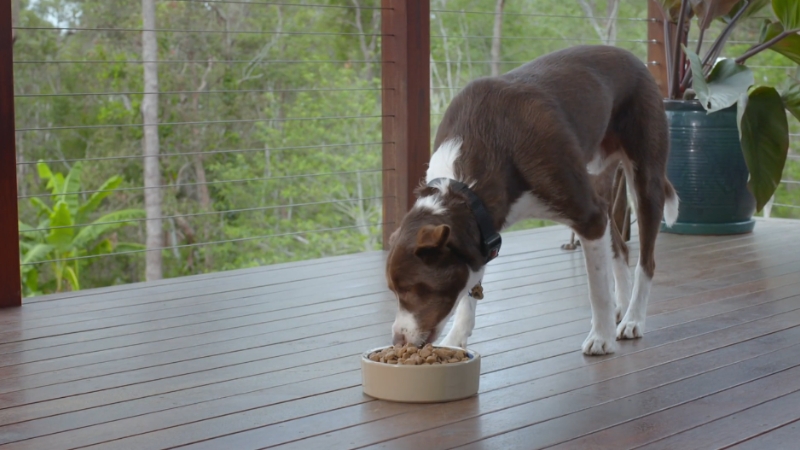
Surprise: a few over-the-counter dog foods are naturally lower in phosphorus, though it takes some label-sleuthing.
Look for:
- Lower protein (but still high quality)
- Phosphorus under 0.6% dry matter
- Added fish oil or omega-3s if possible
Examples:
Brand
Product
Notes
JustFoodForDogs
Renal Support
Vet-formulated fresh food
Weruva
Paw Lickin’ Chicken (wet)
~0.17% phosphorus
Honest Kitchen
Dehydrated Turkey (Limited Ingredient)
~0.6% phosphorus — borderline, but doable in combo meals
Always double-check with your vet before using non-prescription options. You might need to tweak them with supplements or mix them with lower-phosphorus foods.
3. Home-Cooked Meals (with Vet Guidance)
Cooking for your dog can be incredibly rewarding, especially when you’re working to keep them feeling their best.
But when kidneys are in trouble, it’s not the time for guesswork or random recipe hacks. You need to be strategic.
Choosing gluten-free dog food options can also help minimize unnecessary stress on their system, particularly if they have sensitivities.
Here’s a quick breakdown of what’s generally safe, what to limit, and what to avoid entirely:
Category
Examples
Notes
Safer Base Foods
Egg whites, white rice, pasta, green beans, zucchini, sweet potatoes, cabbage
Low in phosphorus and gentle on the kidneys
Use in Moderation
Skinless chicken, turkey breast, carrots, apples
Lean protein is still needed, but must be portion-controlled
Limit or Avoid
Organ meats, fish (most types), cheese, milk, bone meal, high-phosphorus grains
High in phosphorus or can throw off the mineral balance
What to Feed (and Why It Works)
Egg whites are kind of the MVP here. They’re packed with high-quality protein but without the phosphorus punch that yolks bring. Mix them into cooked rice or lightly sautéed veggies and you’ve got a solid base meal.
White rice and pasta are easy on the stomach and naturally low in phosphorus. They help bulk up meals without adding stress to the kidneys.
For veggies, stick with ones like green beans, zucchini, and cabbage—they’re low in phosphorus and generally well-tolerated. Sweet potatoes are a good option too, just be mindful of the carb content if your dog is also dealing with diabetes or weight issues.
The No-Go Zone
Now, the big troublemakers: organ meats (like liver, kidneys, hearts). Sure, dogs love ’em, and they’re nutrient-dense, but they’re also phosphorus bombs.
The same goes for bone meal—which might sound like a natural calcium source but can dangerously spike phosphorus levels if not specifically formulated for kidney support.
Fish is a bit of a gray area. It’s healthy in theory, full of omega-3s, but many types (especially oily fish like sardines or mackerel) are high in phosphorus. If you’re using fish, portion control is everything—and it’s best done with your vet’s input.
And dairy? That creamy spoon of cottage cheese might seem harmless, but it can sneak in more phosphorus than you’d expect. A little, once in a while, might be okay—but only if your vet’s cool with it.
What You’ll Need to Do It Right
View this post on Instagram
A home-cooked diet isn’t just about tossing ingredients in a bowl. You’ll need:
- A recipe formulated by a veterinary nutritionist or a service like BalanceIT that works alongside vets to create kidney-safe recipes.
- A phosphorus binder (like aluminum hydroxide powder or Epakitin) if your dog’s phosphorus levels are stubborn, even with diet changes.
Your vet will recommend this based on lab results. Don’t just add it in on your own.
One Last Word on Homemade Feeding
Even small tweaks—like switching chicken for turkey or adding an extra spoon of sweet potato—can throw off the whole balance. That’s why it’s crucial to stick to measured portions and get regular bloodwork done.
Every few months, your vet can adjust the plan based on how your dog’s kidneys are holding up.
Homemade feeding can absolutely work for dogs with CKD. It just takes a little math, a little patience, and the right professional support.
Want help putting together a sample kidney-friendly recipe with common ingredients?
Hidden Phosphorus: Where It Sneaks In
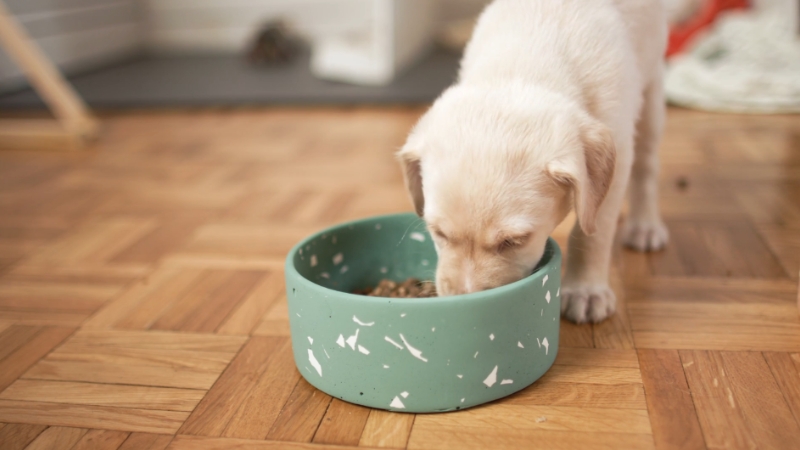
Not all phosphorus is created equal. Foods can have:
- Organic phosphorus (naturally occurring in meat, eggs, grains)
- Inorganic phosphorus additives (used in processed foods—way more absorbable)
That second type? Way worse for kidney patients. Look out for ingredients like:
- Dicalcium phosphate
- Phosphoric acid
- Sodium phosphate
A Note on Protein (Because Everyone Asks)
A dog’s natural diet is high in protein and fat, while most kibble is full of junk. Do some research on dog food, and you will find the good stuff. Getting bones with marrow from the butcher will not break the bank and is well worth it. https://t.co/D5KXR3Vfq1
— Vinnie Tortorich (@VinnieTortorich) March 12, 2025
The goal isn’t to eliminate protein—it’s to feed less, but better-quality protein. Dogs still need it to maintain muscle mass and immune function.
Good protein sources in moderation:
- Egg whites
- Cottage cheese (somewhat high in phosphorus, so check with your vet)
- Cooked chicken or turkey breast
- White fish (cod, tilapia—again, watch the phosphorus)
Balance is the name of the game. Too much protein = stress on the kidneys. Too little = muscle loss and fatigue. Your vet may tweak the target over time depending on your dog’s test results.
Supplements That Might Help
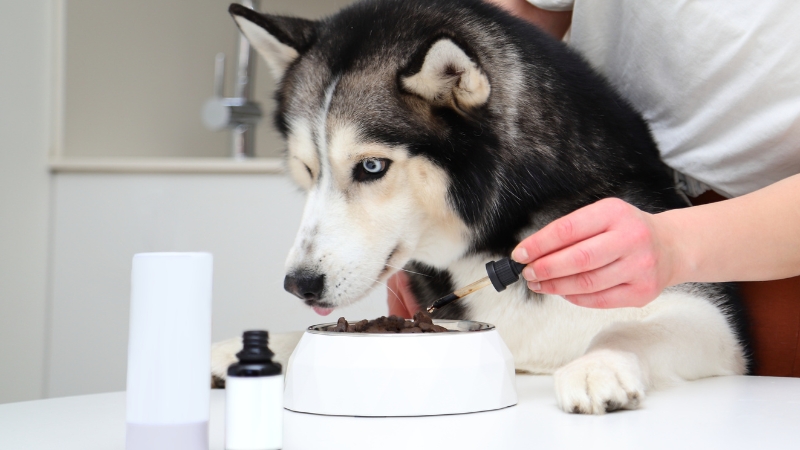
Omega-3 Fatty Acids
- Help reduce kidney inflammation
- Found in fish oil (aim for marine-based EPA and DHA)
- Dosing needs to be appropriate—talk to your vet
Phosphorus Binders
- Medications or powders that bind phosphorus in the gut, reducing absorption
- Can help when diet alone doesn’t lower phosphorus enough
B-Complex Vitamins
- Dogs with kidney disease lose water-soluble vitamins easily
- A supplement can help maintain energy and appetite
Potassium
- Sometimes needed if blood levels drop
- Only supplement under vet direction—too much can be dangerous
Making It All Work: Real-Life Tips
Feeding a dog with CKD isn’t always smooth sailing, but there are ways to make it easier:
- Get your dog involved. Let them sniff and sample new foods before committing to a case of prescription cans.
- Don’t panic if they skip a meal. Appetite may fluctuate. Keep a few go-to favorites handy.
- Stay consistent. Jumping between different foods can upset their stomach and make it harder to track progress.
- Hydration is huge. Offer water constantly. Wet food helps, too. If needed, talk to your vet about adding broth or using a pet-safe electrolyte mix.
- Keep records. Jot down what your dog eats, how much they’re drinking, any vomiting or changes in energy. It helps your vet spot trends.
And if your dog refuses the special diet altogether? You’re not a failure. It happens. Some dogs are stubborn or just plain picky.
Keep working with your vet to find something that works, even if it’s a compromise between ideal and practical.
Final Thoughts
@seniorbudday Kidney failure in dogs is difficult to cure, but there’s still ways to prevent it #dogs #dogsoftiktok #kidneyfailure #dogmom #seniordogs #seniordogsoftiktok #seniordogs #ill ♬ original sound – SENIOR BUDDAY
Kidney disease changes the rules, but it doesn’t mean your dog’s joy in life has to dry up. With the right food—and a little patience—you can keep them comfortable, nourished, and part of the action for a long time.
No one wants to spend hours researching pet food labels. Hopefully, this gave you a clearer picture of what actually helps and where to start.
Give your pup a scratch behind the ears, and hang in there—you’re doing a great job. Seriously.
Would you like a sample meal plan or food label decoding tips next?

